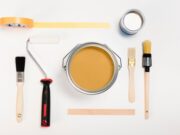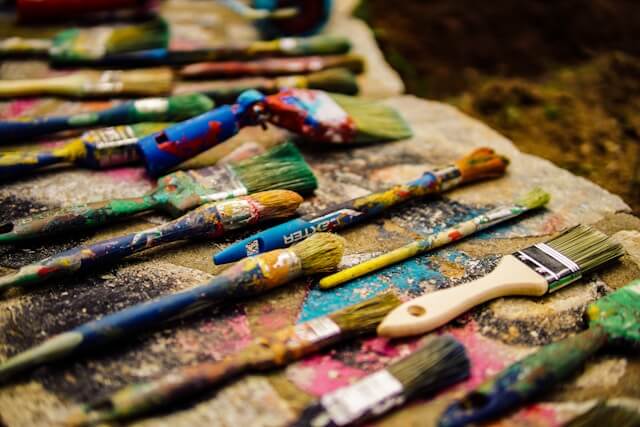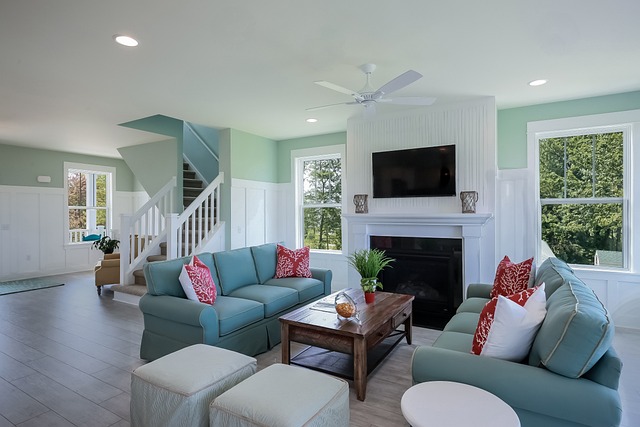Is choosing the right white paint color for your project a challenge?
Let me help you understand the psychology of white paint color and how best to utilize it for your project.
White paint may seem simple at first glance, but its versatility and complexity make it one of the most intriguing shades in the painter’s color chart.
From brilliant whites to off-whites, this timeless color holds the power to transform spaces and serve as a base for creativity.
In this article, I will introduce you to the world of white paint.
I will explore some of its characteristics, applications, and ways you can use it to enhance your space and any environment.
1. The Nature of White Color
White is often regarded as the absence of color, yet it encompasses a broad spectrum of shades with unique properties.
White reflects all wavelengths of visible light at its purest form, resulting in a sense of brightness and purity.
Yet, when tinted with other colors, whites can take on subtle undertones, ranging from warm yellows and reds to cool blues and greens.
2. You should Understand the Undertones
One of the most important aspects of selecting the right white paint is understanding its undertones.
These underlying shades of white can influence the mood and atmosphere of a space.
Warm undertones like light yellow or peach are perfect for creating inviting interiors.
Cool undertones, like sky blue or silver gray, are ideal for contemporary settings.
Neutral undertones, such as off-white, beige or taupe, strike a balance between warmth and coolness, making them good options for any design scheme.
3. Tips For Choosing the Right White
With many shades of white available, choosing the perfect one for your project can sometimes be tasking.
So, when selecting a white paint color, you should consider factors like natural light, existing decor, and the desired feeling.
In well-lit spaces, pure whites can amplify brightness and create an airy feel, while in lit rooms, warmer whites can add warmth and depth.
It is also important to test paint samples in various lighting conditions to gauge how they will appear throughout the day.
4. The Popular White Paints and Their Applications
1. Brilliant White
Bright and clean, brilliant white is a perfect choice for modern interiors, it offers a timeless beauty that complements any range of decoration styles.
It’s perfect for creating a minimalist appearance and can serve as a backdrop for vibrant accents.
2. Soft White
With subtle undertones of beige or ivory, soft white exudes understated elegance, making it a popular choice for traditional and vintage-inspired spaces.
It pairs with rich woods and soft textiles, imparting a sense of warmth and sophistication to your space.
3. Off-White
Off-white shades, such as ivory or cream, offer a softer alternative to brilliant white, adding warmth and depth to any room.
They are well-suited for creating calm and inviting atmospheres in bedrooms, living rooms, and dining areas.
4. Cool White
Cool white paints feature undertones of gray or blue.
They bring a contemporary edge to interiors, making them ideal for modern and minimalist designs.
They work well in spaces with abundant natural light, enhancing the sense of openness and serenity.
5. Warm White
Warm white shades are suitable with yellow or peach undertones.
They infuse spaces with a sense of warmth and vitality, making them perfect for creating inviting and welcoming environments.
They pair with earthy tones and natural materials, like wood and stone.
5. Tips on How to Use White Paint
1. Take Note of Contrast
White paint can serve as a beautiful backdrop for contrast, allowing other elements in the room to stand out.
Experiment with contrasting colors, textures, and finishes to create visual interest and depth.
2. Layer Whites
Be creative by mixing different shades of white within a space to add dimension and complexity.
Consider using lighter whites on walls and ceilings and darker whites on trim and accents to create a subtle sense of variation.
3. Consider Texture
Note that, white paint can highlight the texture of surfaces, adding visual intrigue to walls, ceilings, and furnishings.
Make sure you experiment with matte, satin, or glossy finishes to play up texture and create depth in your space.
4. Balance Your Colors
You must not use white paint to dominate a room.
Use it to balance bold colors or patterns, allowing them to take center stage while providing a sense of beauty and harmony.
5. Take Note of the Finish
The finish of white paint can impact its appearance and durability.
Matte finishes offer a soft, velvety look but may be less resistant to stains and scuffs, while satin and semi-gloss finishes provide a subtle sheen and are easier to clean.
6. The Benefits of White Paint Color
1. It Creates Brightness and Light
One of the most important benefits of white paint is its ability to brighten up a room.
So, white paint reflects light rather than absorbing it, making spaces appear larger and more airy.
This quality is particularly beneficial in smaller rooms with limited natural light.
By painting your space white, you can create a sense of openness and expansiveness, revitalizing even the darkest spaces.
2. It Has a Versatility Nature
White is versatile and pairs well with any decoration style.
It provides a neutral backdrop that allows other elements in the room to shine.
Additionally, white walls provide a blank canvas showcasing artwork, furniture, and decorative accents.
It allows you to change the color of your space when your tastes evolve.
3. It Provides Timeless Elegance
While trends come and go, white remains a timeless choice for interior design and decoration.
Its understated elegance never goes out of style, ensuring that your space will look fresh and inviting for years to come.
Unlike bold or trendy colors that may feel outdated over time.
White paint provides a classic foundation that can be up to date with accessories and furnishings.
4. It Creates a Calm Atmosphere
White paint has a calming effect on the mind and body, making it an excellent choice for bedrooms, bathrooms, and other relaxation spaces.
Its serene qualities promote a sense of peace and serenity, helping to create a soothing retreat from the stresses of everyday life.
Whether you prefer pure white, or warmer, softer tones, incorporating white paint into your decoration can help foster a sense of calm and relaxation.
5. It Enhances Architectural Details
White paint can highlight the architectural features of your home, such as crown molding, trim, and wainscoting.
By painting these elements white, you can draw attention to their beauty and craftsmanship, adding depth and dimension to your space.
Additionally, white paint can unify disparate architectural styles, creating a beautiful and harmonious look throughout your home.
6. It Is Easy to Maintain
Practicality is another advantage of white paint.
Unlike darker colors that show every smudge and fingerprint, white is forgiving and easy to maintain.
Minor scuffs and marks are less noticeable on white walls, making them ideal for high-traffic areas such as hallways and entryways.
Additionally, white paint tends to resist fading and discoloration over time, ensuring that your walls will keep their beautiful and clean appearance with minimal upkeep.
7. Conclusion
White paint may seem simple, but its versatility and complexity make it a powerful tool for interior design.
White paint offers endless possibilities for enhancing any environment.
Why not embrace the timeless shades of white and give your home a fresh, new look?
With its many benefits, you’ll never go wrong with this classic choice.
So go ahead, embrace the beauty of white, and let your creativity shine.
I hope this was helpful to you.
































[…] the right paint color for your project is a decision that should not be taken […]
[…] This article will explore practical tips and examples for combining paint colors to elevate your living room’s design. […]